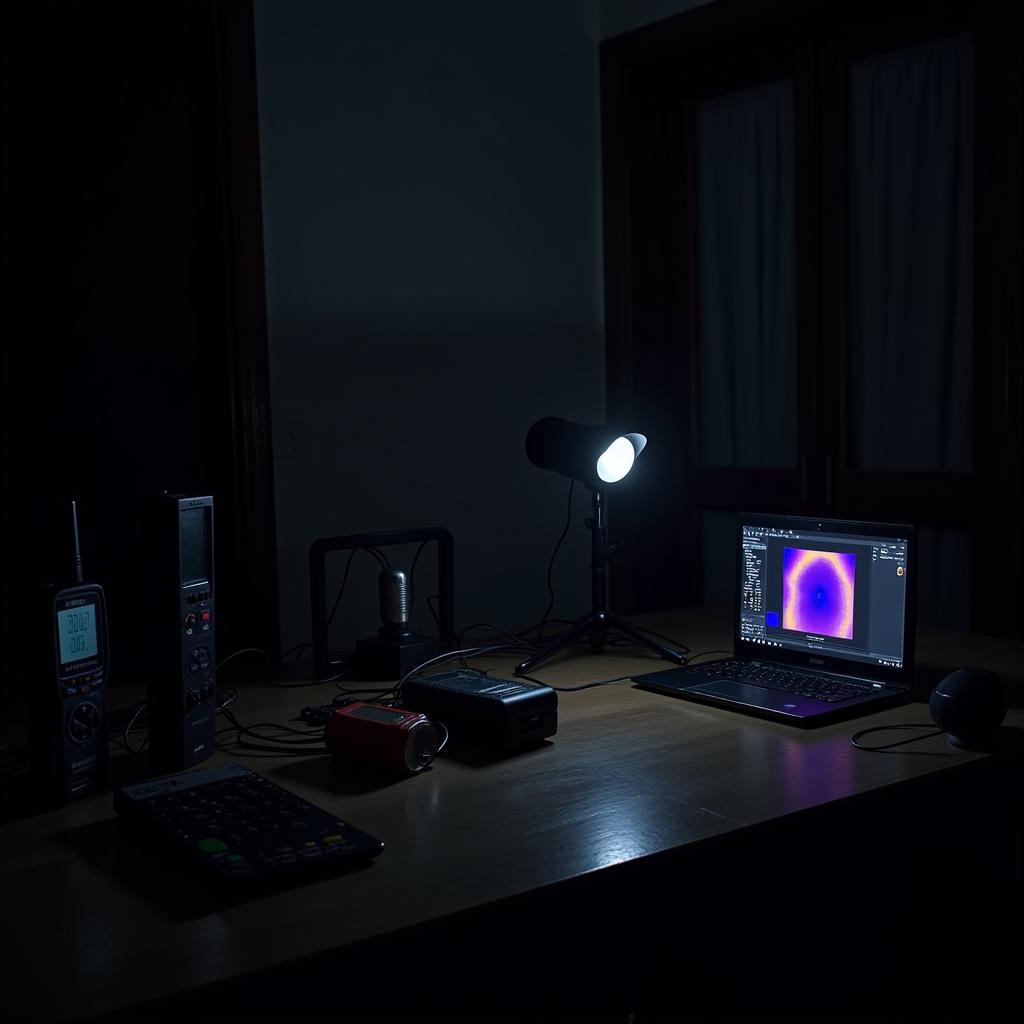The pursuit of the unknown has captivated humanity for millennia, with countless tales of spectral figures, unexplained occurrences, and phenomena that defy logical explanation. In the realm of paranormal research, the “Picture Of Research” takes on a unique significance. It’s not just about capturing visual evidence, though that plays a crucial role; it’s about weaving together a tapestry of data points, observations, and analysis to illuminate the shadows of the unexplained.
Beyond the Lens: Understanding the Scope of Paranormal Investigation
Paranormal research extends far beyond the stereotypical image of ghost hunters armed with EMF readers and night-vision cameras. While these tools undoubtedly have their place, the true “picture of research” encompasses a much broader spectrum of methodologies.
Historical Analysis: Unearthing Echoes of the Past
One often-overlooked aspect of paranormal research involves delving into the historical context of allegedly haunted locations or events. By meticulously examining old records, newspaper clippings, diaries, and local lore, researchers can uncover patterns, corroborate witness accounts, and gain valuable insights into the potential origins of paranormal activity.
The Power of Personal Testimony: Separating Fact from Fiction
Witness interviews are the lifeblood of paranormal research. Gathering firsthand accounts from individuals who claim to have experienced paranormal phenomena is essential for building a comprehensive picture. However, this aspect requires a nuanced approach. Researchers must employ active listening skills, empathy, and a healthy dose of skepticism to differentiate between genuine experiences, misinterpretations, and hoaxes.
The Science Behind the Unexplained: Applying Scientific Rigor
While the paranormal often seems to defy scientific explanation, that doesn’t mean scientific principles should be abandoned. On the contrary, legitimate paranormal research strives to apply scientific rigor wherever possible. This might involve using electromagnetic field detectors, temperature sensors, infrared cameras, or even advanced imaging techniques to document and analyze potential anomalies.
 An array of equipment used for a paranormal investigation
An array of equipment used for a paranormal investigation
Interpreting the Data: The Challenge of Subjectivity
One of the most significant challenges in paranormal research lies in interpreting the collected data. By its very nature, the paranormal often exists in the realm of subjective experience. As such, researchers must tread carefully, avoiding confirmation bias and seeking multiple interpretations before drawing any conclusions.
The Importance of Collaboration: Bringing Together Diverse Perspectives
The “picture of research” in the paranormal field is often most complete when viewed through the lens of collaboration. By working together, sharing data, and engaging in open dialogue, researchers from various backgrounds and disciplines can challenge assumptions, refine methodologies, and contribute to a more robust understanding of these enigmatic phenomena.
The Ongoing Quest: Unveiling the Mysteries of the Unknown
The study of the paranormal is an ongoing journey, not a destination. While definitive answers may remain elusive, the pursuit itself can be intellectually stimulating and profoundly impactful. By embracing a multifaceted “picture of research,” we can continue to shed light on the shadows, pushing the boundaries of understanding and unraveling the mysteries that lie at the fringes of our reality.
FAQs About Paranormal Research
1. Is paranormal research dangerous?
Like any field of investigation, paranormal research carries inherent risks, primarily associated with exploring potentially hazardous environments. However, responsible researchers prioritize safety and take precautions to minimize risks.
2. What is the most compelling evidence for paranormal activity?
The “most compelling” evidence varies greatly depending on personal beliefs and the specific phenomena in question. Some find EVP recordings (electronic voice phenomena) persuasive, while others may consider anecdotal accounts or photographic evidence more compelling.
3. Can anyone become a paranormal investigator?
Technically, yes, there are no formal educational requirements to become a paranormal investigator. However, successful researchers typically possess a combination of curiosity, critical thinking skills, a respect for the unknown, and a willingness to learn and adapt.
Seeking Answers in the Darkness?
Do you have more questions about the paranormal or need assistance with a haunting or unexplained phenomenon? Our team at Paranormal Research is here to help. Contact us at 0904826292, email us at research@gmail.com, or visit our office at No. 31, Alley 142/7, P. Phú Viên, Bồ Đề, Long Biên, Hà Nội, Việt Nam. Our dedicated team is available 24/7 to provide guidance and support.